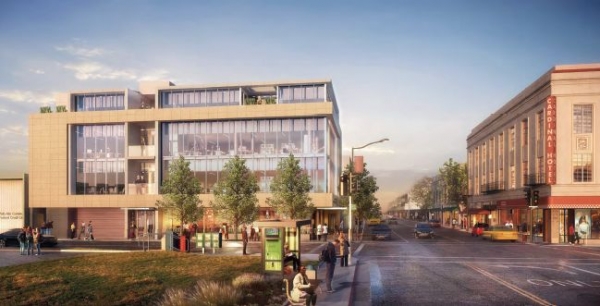Architecture, like literature, music and every other art form, has always attracted skirmishes over taste. Past battles, much like today's, happened to take place during periods of rapid growth and focused mainly on issues of mass and compatibility.
In the early 1970s, concerns about rapid urbanization prompted the city to adopt a 50-foot height limit for new developments. In the mid- and late-1990s, residents clashed over the city's historic-preservation ordinances, with one side lamenting the "monster homes" and "Baby Taco Bells" that replaced some of the smaller and older homes and the other side arguing that the city's effort to protect "historic" homes was far too restrictive.
Now as then, residents and council members often lash out at new developments for their failure to conform to the styles of surrounding homes, whether traditional or modern.
Residents in the Eichler neighborhood of Palo Verde recently opposed a new two-story building that they argued fails to conform to the mid-century modern Eichler aesthetic. Not only architecture but also massing were at the heart of the dispute. The neighbors felt the proposed building (which, like the earliest Queen Annes, had a gabled, multi-layered roof in its first iteration) would be incompatible with Eichler homes throughout the block.
The petition drive, led by the Eichler Swim Club, succeeded in prompting revisions to the new home, which remains two stories but which now more closely resembles the block's traditional (that is to say, modernist) architecture -- stouter, boxier and more muted in its color palette.
Meanwhile, downtown's architecture critics argue that modern architecture is incompatible with the Spanish arches and stucco facades of Birge Clark-style buildings. In resident Douglas Smith's campaign against modernist "glass boxes" this past year, he created a survey comparing photos of traditional, mostly Spanish Colonial buildings with minimalist modern buildings and asked voters to state their preferences between the two. One pairing pitted the Pasadena City Hall, a domed 1920s structure filled with Spanish-style arcades and columns, against Palo Alto's minimalist civic tower, which was designed in the 1960s. Another juxtaposed the glassy, soon-to-be-completed Mitchell Park Library against the smaller, Colonial-style College Terrace Library. He also asked survey responders for general thoughts about architectural styles and the city's review process and was heartened that about 80 percent favored traditional styles such as Spanish Colonial when it comes to commercial downtown buildings.
In November, Smith followed up his appeal of 240 Hamilton Ave., located across the street from City Hall, by challenging another Ken Hayes project, a four-story modernist building that had just been approved for 636 Waverley St. He cited the survey at a council meeting, noting that a vast majority of the respondents found the new buildings to be incompatible with the ones around them (77 percent in the case of 240 Hamilton). He described the design composition of the Hayes development as "a jumbled mess of elements that fit together in a strictly utilitarian fashion, subject to no overall aesthetic pattern that would please a non-architect passerby."
By the end of last year, the public outcry against new developments (most of which happened to have been modernist and pushing the limits of height and density) was getting loud. In November, Chief Planning Official Amy French notified the Architectural Review Board that Smith had challenged in an appeal the approval of 636 Waverley.
"It's a trend, officially," French said.
"An epidemic," responded then-Vice Chair Lee Lippert.



Comments